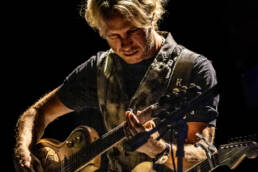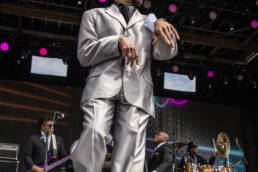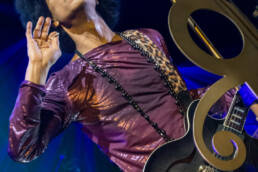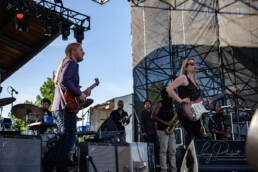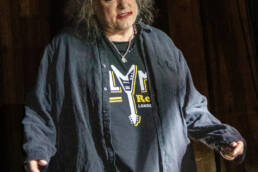Chuck Berry: The Father of Rock ‘n’ Roll, 2012
Imagine a young man in St. Louis, strumming a borrowed guitar in the back of a barbershop, the notes spilling out like a secret he couldn’t keep to himself. That was Chuck Berry, a dreamer with a restless soul, whose journey into music wasn’t just a career choice—it was a rebellion, a lifeline, and a love affair with sound that would change the world. Here’s the story of how a kid from Missouri became the architect of rock ‘n’ roll, weaving a legacy that still echoes through every riff and rebel yell today.
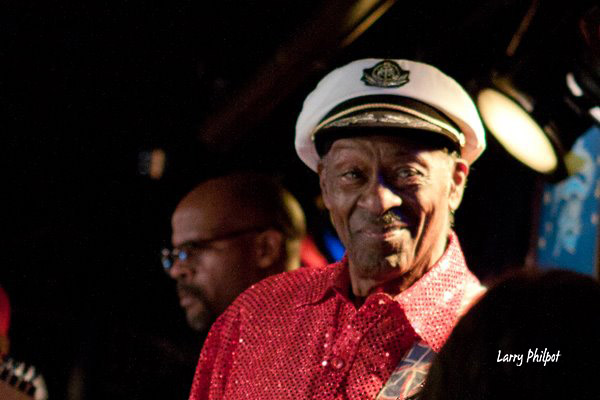
The Spark That Ignited a Legend
Chuck Berry didn’t stumble into music; he was pushed there by a mix of mischief and destiny. Born Charles Edward Anderson Berry on October 18, 1926, in St. Louis, Missouri, he grew up in a middle-class Black family, a rarity in the segregated America of his time. His primary motivator? A burning desire to break free from the ordinary. As a teenager, he landed in reform school after a joyride-turned-robbery went wrong in 1944. Behind those walls, he found solace in singing, joining a gospel group that lit a fuse in his heart. When he walked out at 21, he wasn’t just free—he was determined to turn that spark into a blaze. Music became his escape hatch from a life of factory work and petty crime, a way to channel his charisma and restless energy into something bigger than himself.
A Thorough Biography: From St. Louis to Stardom
Chuck’s early years were a patchwork of grit and groove. The fifth of six children, he was raised in The Ville, a vibrant Black neighborhood where jazz, blues, and gospel swirled in the air. His father was a contractor and deacon; his mother, a school principal. But Chuck wasn’t cut out for the straight and narrow. By high school, he was performing at talent shows, blending country twang with bluesy swagger—a sound he’d later perfect. After his stint in reform school, he worked odd jobs—carpenter, janitor, hairdresser—while moonlighting with local bands. In 1950, he married Themetta “Toddy” Suggs, who’d become his rock through decades of highs and lows. They’d raise four kids, but Chuck’s real baby was his guitar.
By the early ’50s, he was gigging with the Sir John’s Trio, a St. Louis outfit led by pianist Johnnie Johnson. It was here that Chuck honed his craft, soaking up influences from Muddy Waters to Nat King Cole. In 1955, he took a fateful trip to Chicago, where he met Waters and auditioned for Chess Records. His demo of “Ida Red” caught fire, and with a tweak to “Maybellene,” Chuck Berry stepped into history. The song hit No. 5 on the Billboard charts, and the kid from St. Louis was suddenly a national name.
What followed was a whirlwind: hit after hit, coast-to-coast tours, and a stage presence that electrified crowds. His duck walk—born from a spontaneous crouch to dodge a low ceiling—became iconic. But life wasn’t all spotlights. In 1959, he was arrested under the Mann Act for transporting a minor across state lines, a racially charged case that landed him in prison from 1961 to 1963. He emerged bruised but unbroken, reclaiming his throne with songs like “No Particular Place to Go.” Through the ’70s and ’80s, he toured relentlessly, a one-man jukebox of nostalgia. Chuck kept performing into his 80s, his final show at St. Louis’s Blueberry Hill in 2014. He passed on March 18, 2017, at 90, leaving a legacy etched in vinyl and stone.
Career Biography: Bands, Relationships, and Rock ‘n’ Roll Reverie
Chuck Berry wasn’t a “band guy” in the traditional sense—he was the band. His most consistent collaborator was Johnnie Johnson, the pianist whose rollicking keys defined Chuck’s early Chess Records sound. The Sir John’s Trio morphed into the Chuck Berry Combo, a loose outfit that included Johnson, drummer Ebby Hardy, and a rotating cast of bassists like Willie Dixon. Johnson, a quiet genius, was Chuck’s musical soulmate; their interplay on tracks like “Roll Over Beethoven” was pure magic. No other bandmates rivaled that bond, though Chuck often hired local players for gigs.
Relationships with other artists? Chuck was a lone wolf, but his influence rippled wide. He toured with Buddy Holly and inspired The Beatles—John Lennon once said, “If you tried to give rock ‘n’ roll another name, you might call it Chuck Berry.” The Rolling Stones’ Keith Richards idolized him, though their bond soured when Chuck punched him during a 1980s jam session for touching his guitar. On TV, Chuck popped up everywhere—American Bandstand, The Ed Sullivan Show—and in films like Rock, Rock, Rock! (1956). His 1972 hit “My Ding-a-Ling” even landed him on The Mike Douglas Show, giggling through its cheeky lyrics.
Awards piled up late in life. In 1984, he snagged a Grammy Lifetime Achievement Award. Two years later, he was the first inductee into the Rock and Roll Hall of Fame, with Richards giving the nod. NASA sent “Johnny B. Goode” into space on the Voyager Golden Record—a cosmic encore. Chuck’s biggest songs? Here’s the rundown:
- “Maybellene” – Written by Chuck Berry, a 1955 rocket that fused hillbilly bounce with R&B grit.
- “Johnny B. Goode” – Chuck’s 1958 masterpiece, penned solo, a semi-autobiographical ode to every dreamer with a guitar.
- “Roll Over Beethoven” – Another Chuck original from 1956, a cheeky jab at classical snobs.
- “Sweet Little Sixteen” – Written by Chuck in 1958, a surf-rock precursor that captured teenage fever.
Controversy: The Highs and Lows of a Rebel
Chuck’s career wasn’t spotless. The 1959 Mann Act arrest was a gut punch—convicted of transporting a 14-year-old girl he’d hired as a hatcheck girl, he served 20 months. Critics called it a setup fueled by racism; Chuck called it a lesson. In 1979, he did three months for tax evasion, shrugging it off with a grin. Then, in 1990, a lawsuit claimed he’d installed cameras in the women’s restroom of his St. Louis restaurant. He settled out of court, denying it but paying a price in reputation. These storms never sank him—he’d just duck walk right through.
A Night to Remember: The Duck Walk’s Debut
Picture this: St. Louis, 1950s, a sweaty club packed to the rafters. Chuck’s mid-set, riffing hard, when he drops low to dodge a chandelier. The crowd roars as he waddles across the stage, guitar blazing. “I didn’t plan it,” he’d laugh later, “but they wouldn’t let me stop.” That night, the duck walk was born—a move so wild it became his signature, a symbol of rock’s untamed spirit. Years later, at Madison Square Garden in 1972, he’d pull it off again, 20,000 fans losing their minds as the 46-year-old proved he still had it. It wasn’t just a step; it was Chuck Berry saying, “I’m here, and I’m free.”

